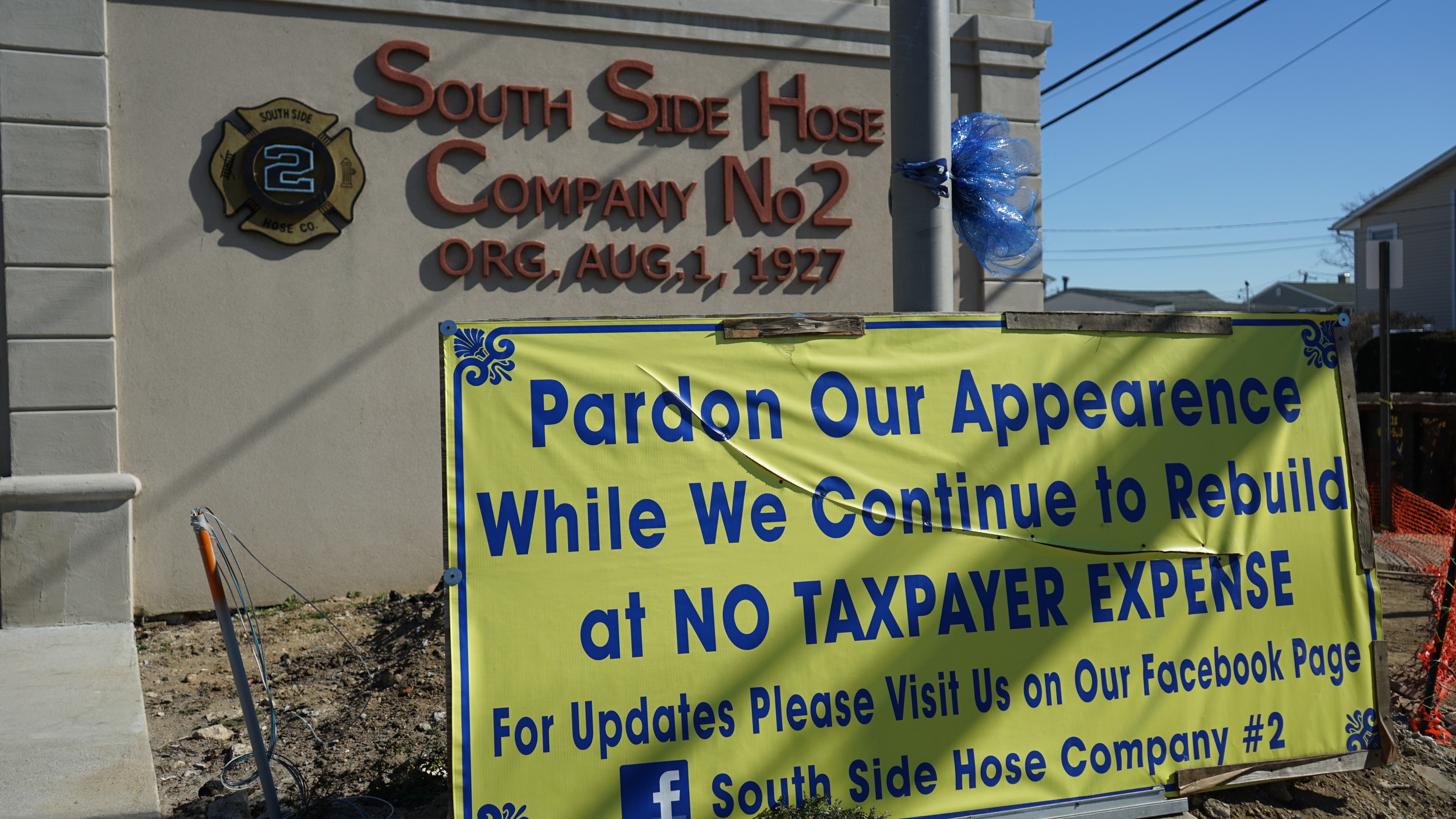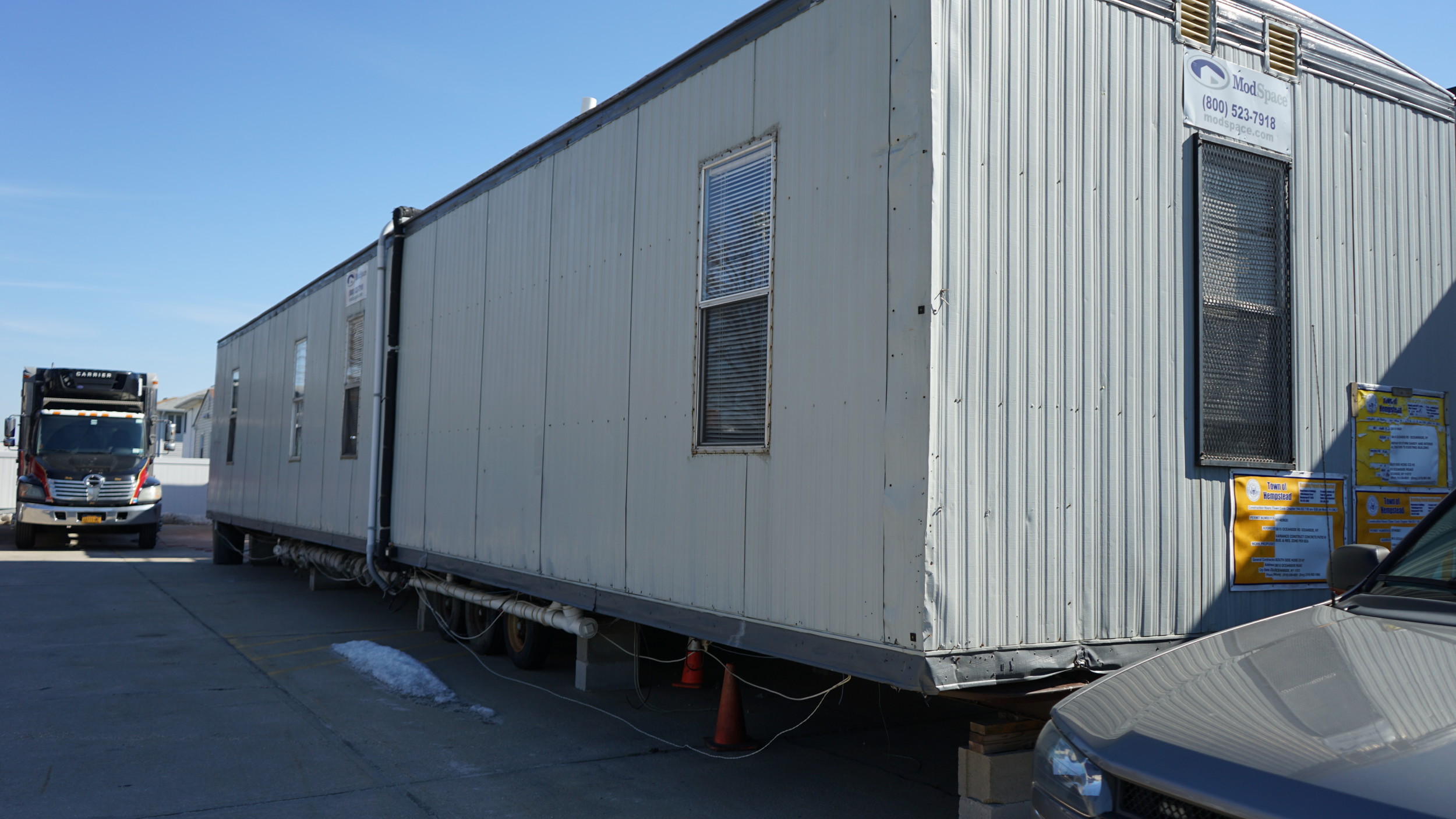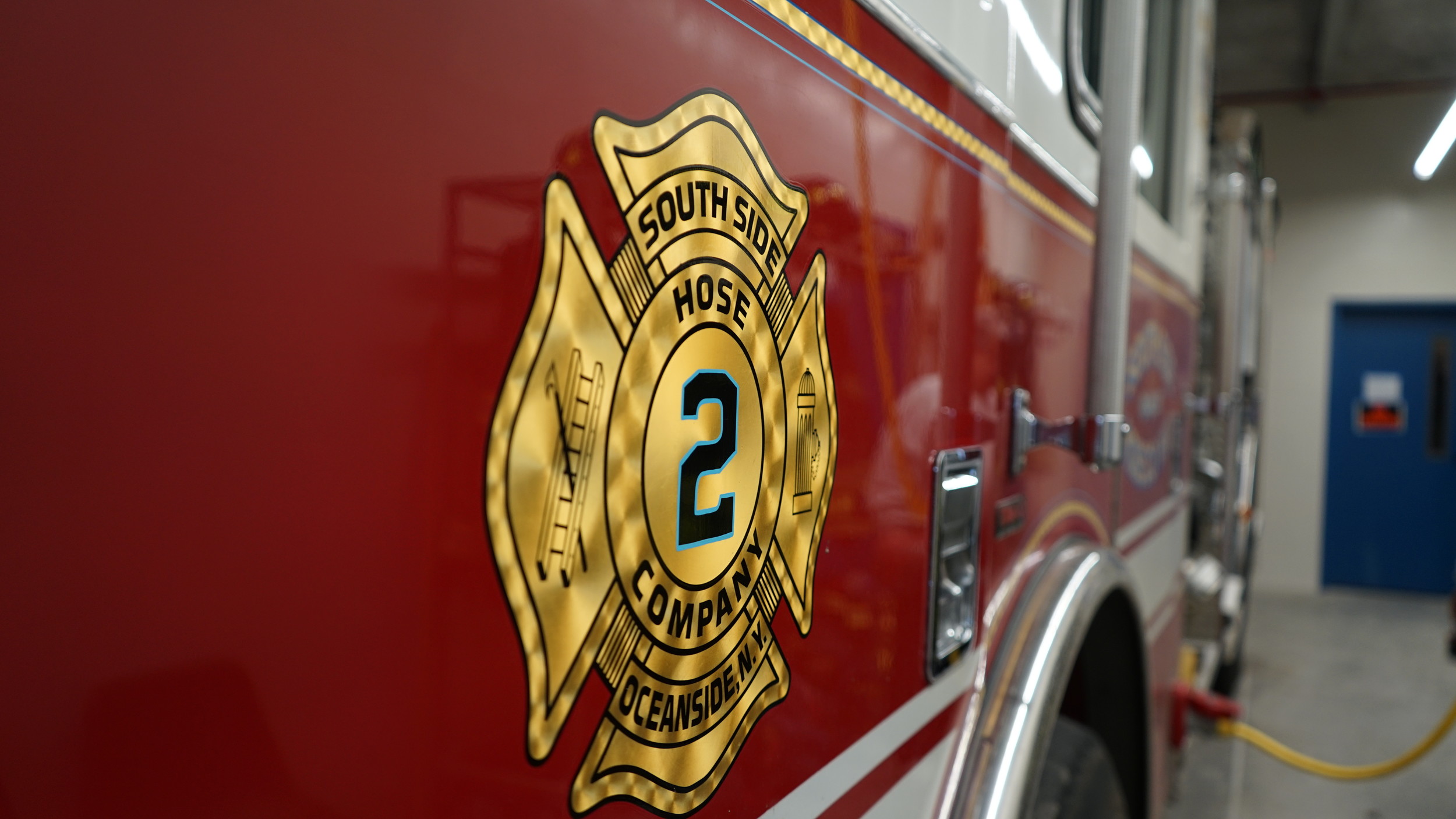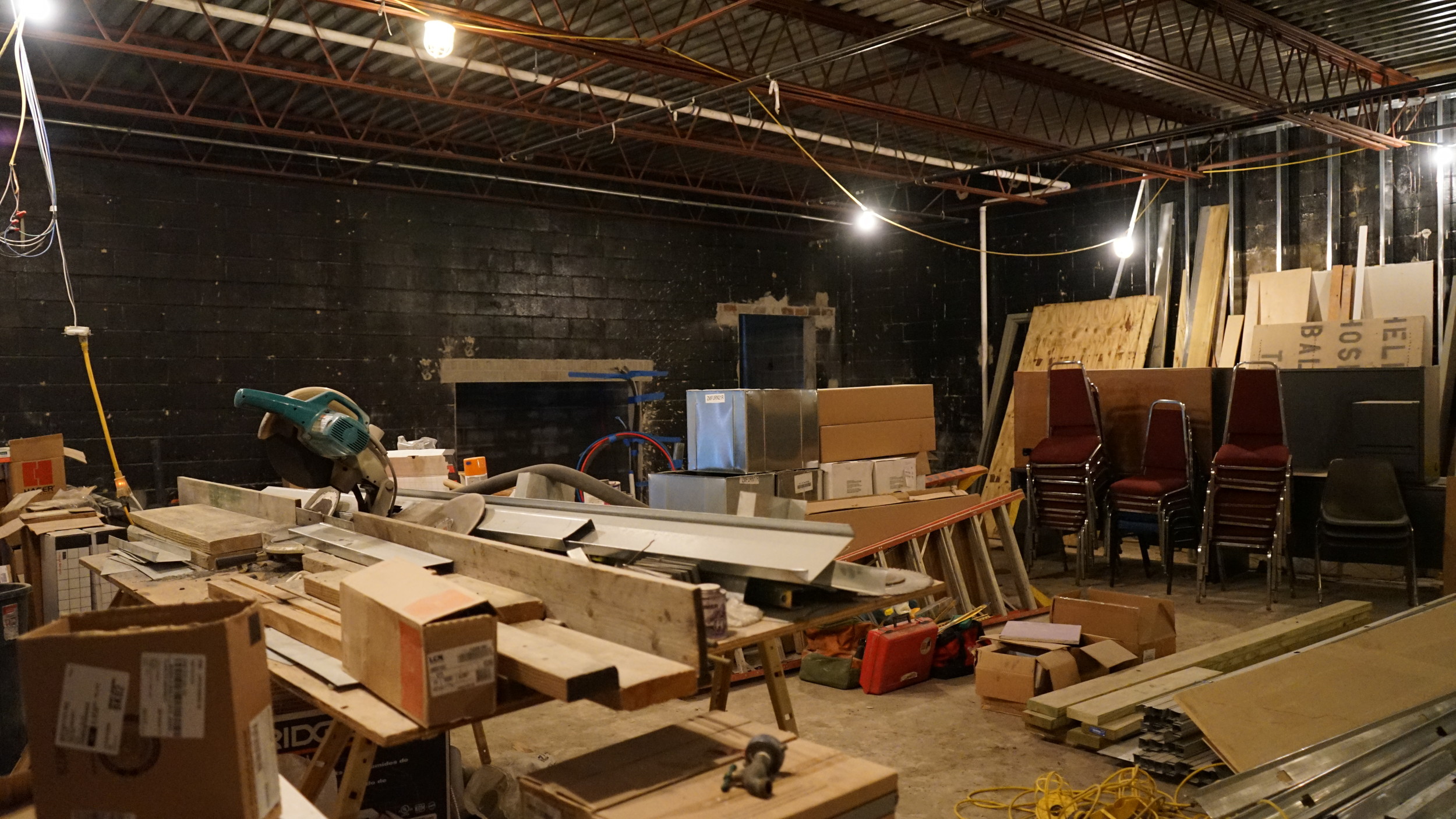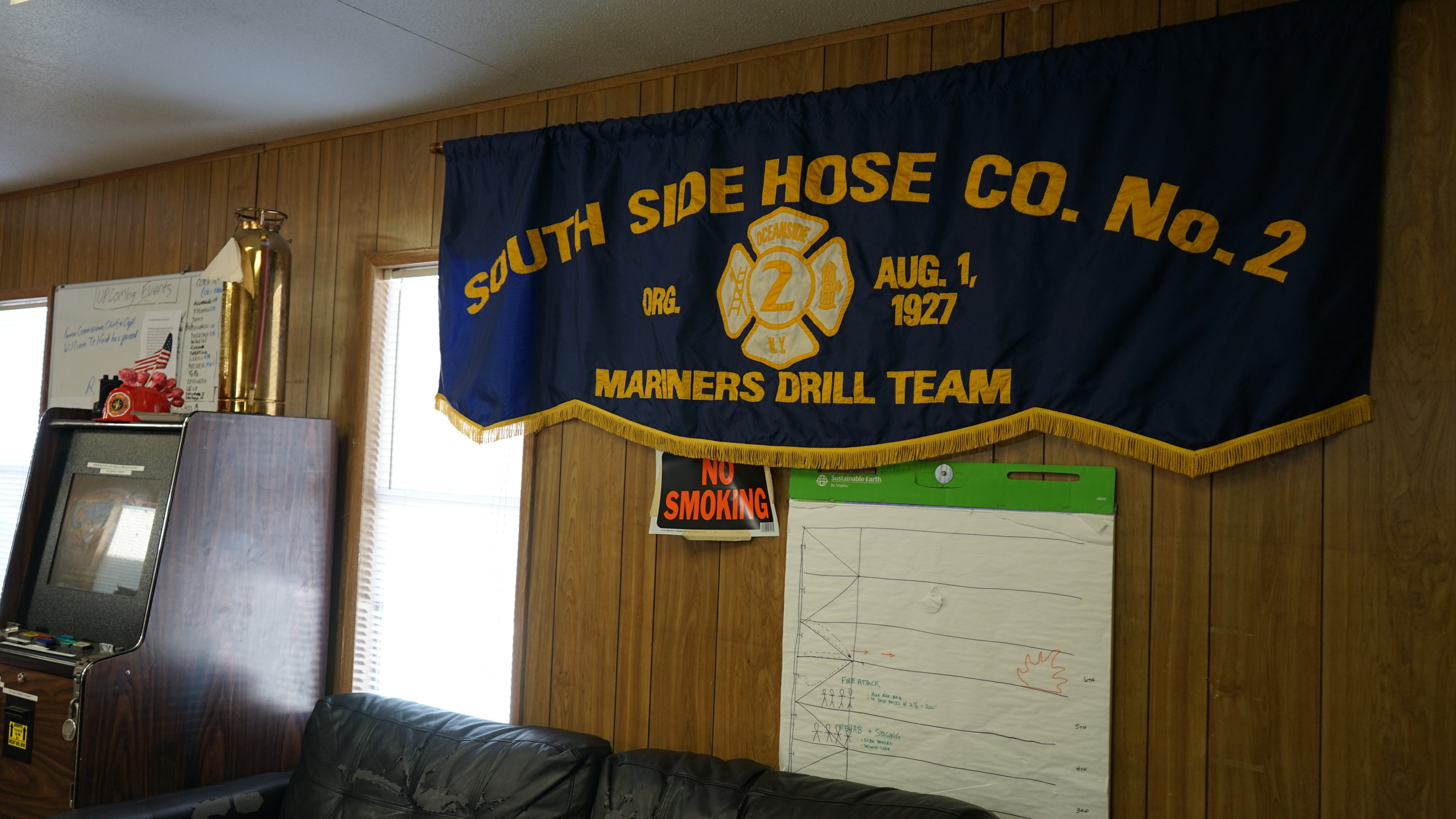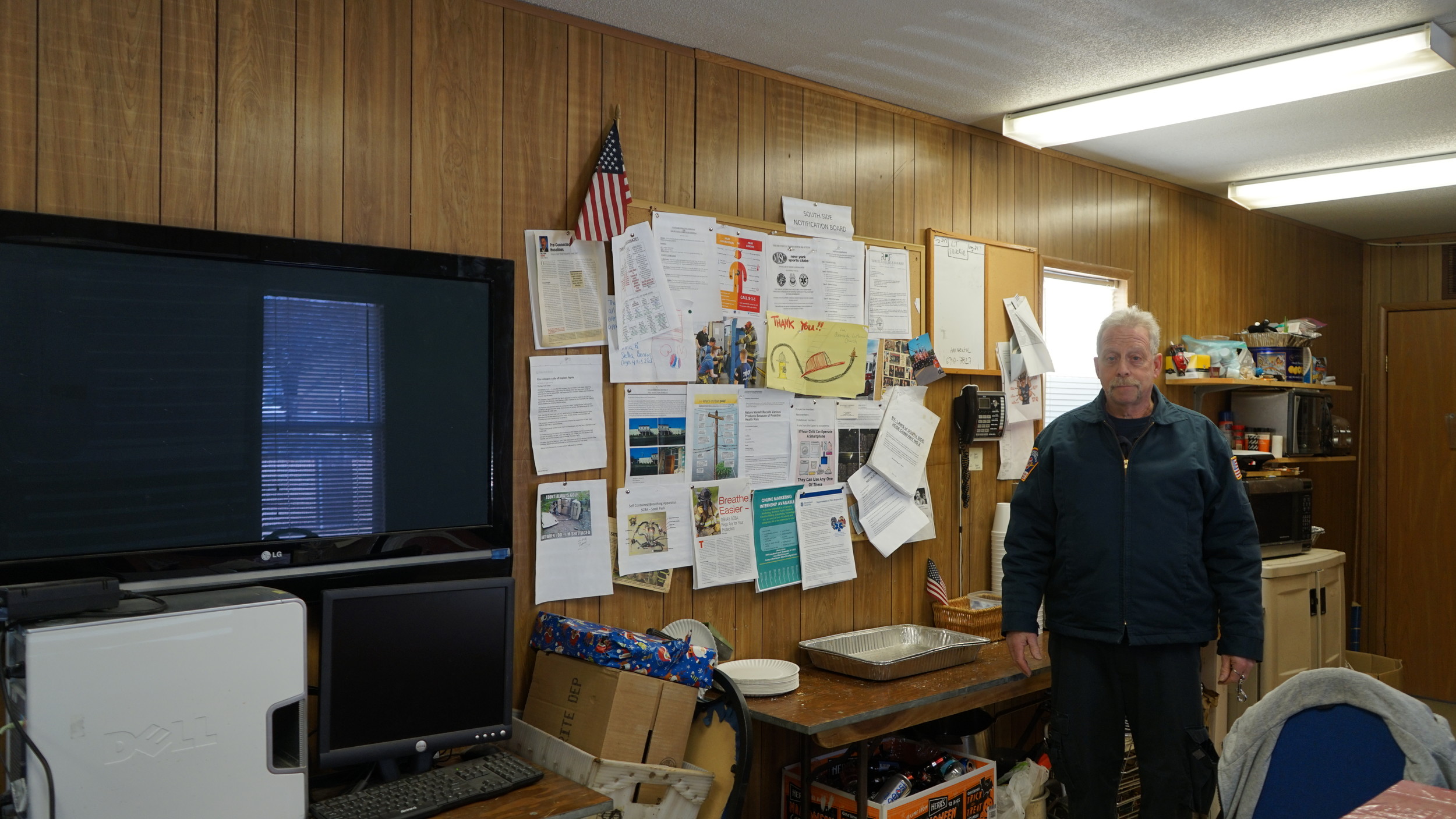A long road to recovery
Oceanside South Side Hose Company No. 2 struggles to rebuild four years after Sandy
For 90 years, volunteer firefighters have operated out of Oceanside’s South Side Hose Company No. 2 firehouse on Alice Avenue. But for the last four, they have been working out of a trailer in a neighboring parking lot.
Hurricane Sandy rendered the company’s firehouse uninhabitable in 2012, and the 39 volunteers’ path to recovery still stretches out before them. As one of the Oceanside Fire District’s two privately owned fire companies, its situation is unique, and as a result, dealings with the Federal Emergency Management Agency and New York Rising have been difficult, according to fire officials.
“They’ve really been beat up by it,” said Oceanside Fire Chief Kevin Klein. “But they’ve been working through it.”
Hose Company No. 2’s firehouse relies almost entirely on fundraisers to operate. While the district, funded by taxes, supplies its equipment and trucks, the building itself is maintained by donations. “If we wanted to change the carpeting, we’d have to fundraise,” said Ed Scharfberg, OFD spokesman and a Company No. 2 member. “This is what FEMA didn’t understand, and in Washington, they didn’t know about independent firehouses.”
The agency requests that all storm-damaged properties undergo mitigation to protect against future storms. But FEMA reimburses the property owners only after work is completed.
This meant that actual reconstruction couldn’t begin until projects — such as moving generators and air conditioning units to the roof and installing waterproofed doors —were done. As a result, the company was forced to rely on insurance money, intended for reconstruction, to pay for the mitigation.
Neither FEMA nor the company’s insurance would pay for the crane required to move the heavy equipment to the roof, Scharfberg said, and the volunteers were once again forced to use insurance money slated for other projects.
In a written statement, FEMA spokesman Don Caetano said that the agency’s Public Assistance Program counsels sub-applicants on the process, and that fire officials were aware they would need to spend their own money before being reimbursed.
Loans were impossible to obtain, fire officials added, because banks called for stable sources of income before issuing them. Since the company relies on donations, there was no way it could meet that requirement.
The crew spent hundreds of hours submitting and resubmitting forms to FEMA, according to Scharfberg, who claimed that rules changed often. Throughout the process, the company had to deal with six separate caseworkers. “Everyone promised to help us,” he said, adding that most of the company’s documents were destroyed in the storm, which complicated the process.
Additionally, the company faced pushback when it claimed that the promised aid did not cover what Scharfberg described as high construction costs in New York. Neither FEMA nor the company’s insurer initially agreed to fund reconstruction to bring the building up to current local code.
It wasn’t until last November that about $260,000 of FEMA reimbursement arrived, according to Scharfberg, which, he said, is 60 to 65 percent of the reimbursements originally promised.
Caetano noted that the speed at which sub-applicants are reimbursed depends on a number of factors, including the timely submission of accurate receipts and the amount of time needed to review documentation.
Nevertheless, the money has allowed proper reconstruction to begin, and the company estimated that the interior of the firehouse’s garage would be completed in early March.
The company’s experience with New York Rising wasn’t much better, Scharfberg said. Within six months after the storm, the state agency promised $100,000. But as time went on and regulations changed, the amount the company was eligible for shrank to $50,000. Ultimately, it received less than $20,000 in aid, he added.
The company’s service has never been compromised by the long ordeal, but the firefighters’ morale took a hit. “It’s depressing to live in a trailer,” Scharfberg said. The homes of 24 of the 39 volunteers were damaged by Sandy, he added.
The rest of the building is still a work in progress. The offices and the company room are almost finished, but the meeting room at the rear of the building still requires renovation. Still, company officials hope to leave their trailer this summer. “I think it will be a great thing for that company when they’re back in their firehouse,” Klein said. “It’s hard to get guys motivated when all they have is that trailer.”

